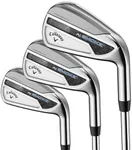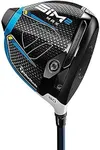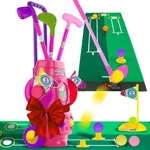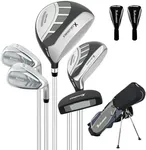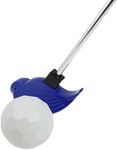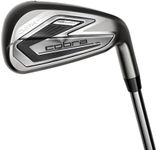Buying Guide for the Best Golf Clubs
Choosing the right golf clubs is essential to improving your game and your enjoyment on the course. Since golf clubs come in many different shapes, sizes, and materials, it's important to match the clubs to your swing, skill level, and playing style. The right set of clubs can help you hit the ball more accurately and consistently, so taking some time to understand the key specs will help you make a more informed decision.Club TypeGolf clubs are divided into several types, including drivers, woods, irons, wedges, and putters. Each type is designed for a certain part of the game. Drivers and woods are best for long-distance shots from the tee or fairway, irons are used for a variety of shots from fairway to rough, wedges are specialized for short shots and getting out of tricky spots, and putters are used on the green. It’s important to have a mix of these to handle different situations on the course. Beginners often do well with a simple combination set, while more advanced players might want specific types for more control.
Shaft MaterialThe shaft is the long part of the club, and it typically comes in either steel or graphite. Steel shafts are usually heavier and offer more control, which can suit players who are stronger or want a more consistent swing. Graphite shafts are lighter and can help you swing faster, making them a good choice if you want more distance or have a slower swing speed. Consider your strength, swing speed, and overall comfort when choosing shaft material.
Shaft FlexShaft flex refers to how much the shaft bends during your swing. Common categories are extra stiff, stiff, regular, senior, and ladies. Faster, more powerful swings typically need stiffer shafts, while slower, smoother swings benefit from more flexible shafts. Matching flex to your swing speed will make your shots straighter and more consistent. If you’re unsure, many golf stores offer swing speed testing to help you decide.
Clubhead Design (Cavity Back vs. Blade)Clubhead design mainly varies between cavity back and blade (muscle back) irons. Cavity backs have a hollowed-out area, making them more forgiving on off-center hits and great for beginners or mid-handicap golfers looking for easier playability. Blades have a smaller sweet spot and require more precision, but they allow for greater control and feedback, making them suitable for experienced players. Assess your skill level and consistency before choosing.
LoftLoft is the angle of the clubface and affects how high and far the ball goes. Higher loft increases height but usually results in less distance, while lower loft produces a lower, longer shot. Drivers have the least loft, wedges have the most. Knowing your typical ball flight and what shots you struggle with can help you pick the right lofts for your clubs.
Grip SizeGrip size is the thickness of the club’s handle. A grip that’s too small or too large can affect your swing and control. Smaller hands typically need thinner grips, while larger hands benefit from thicker grips. To find your best fit, try different grip sizes and notice which one feels most comfortable during your swing.
Set CompositionSet composition refers to which clubs are included in a set. Some sets are comprehensive with drivers, woods, irons, wedges, and a putter, while others have just a few basic clubs. Beginners often benefit from a simple set to start, focusing on the main clubs necessary for learning. As skills improve, you can add specialized clubs that suit your game and address gaps in your performance.






